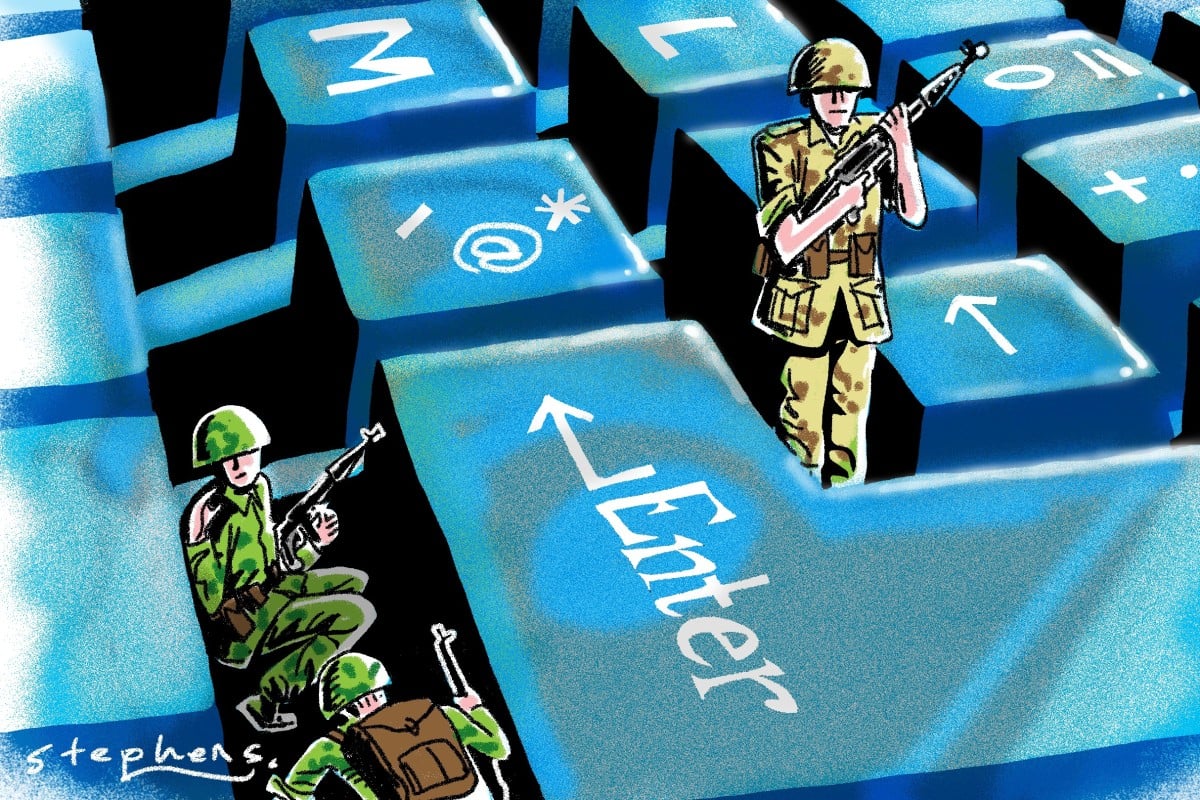The whole world is warning countries about cyberwarfare. Despite the mysteriously ignored warning, we anticipate that cyberwarfare will be the new wilderness of battles between nations – but why?
While the internet is the digital rescuer during this COVID-19 time, we are seeing incidents identified with digital assaults, hacking, and data breaches, which features that the web isn't protected. It is basic to know about cyberwarfare, as mindfulness is the primary most significant advance to relieving it.
Cyberwarfare isn't new, it's as of now occurring; here is the historical backdrop of assaults and results:

Cyberwarfare alludes to cyber-attacks executed by one nation or state against another; in any case, it can likewise be an assault by programmers or psychological militants pointed toward encouraging the mission of the individual country. By and large, the PCs are not the last objective, but rather the frameworks they control.
A very much arranged assault could adjust stock prices, knock out traffic light systems, knock out emergency services, weaken military responsiveness, and upset the economy.
Cyberwarfare can be launched in a flash, leaving space for hypothesis and making it hard to counter. The weapons of cyberwar resemble those being utilized by cybercriminals. It can change from the refined to the total fundamental. DDoS is one of the uncontrollable weapons. Spear phishing and social designing are other standard weapons used to acquaint an assailant with the PC of an adversary.
In a cyberwar, the possibility of early notice is non-existent; thus, it is hard to acknowledge who may assault you or even who has assaulted you.
Cybersecurity is the war zone where assailants (programmers) and safeguards are hoping to overcome one another. At this moment, the attackers are on the dominant side.
Programmers are defeating safeguards by disclosing new infections and malware consistently. Varonis has as of late revealed another malware called Monero crypto-jacking malware, which clandestinely tormented an undertaking for a year. As per the Hackerpocalypse: A Cybercrime Revelation report, the expense of cybercrime harm will reach $6tn by 2021.
No cutting edge intruder would fight the temptation to disturb, confound or wreck foe correspondences, sensors, and dynamic circles. Also, aggressors are more creative at this point. As indicated by RiskBased Security, 3813 information breaks were accounted for during the main portion of 2019, uncovering over 4.1 billion records.
The cloud explosion has made another issue. As more organizations move to the cloud, so do cybercriminals. Analysts have noted monstrous security assaults on the G Suite and Office 365 utilizing the IMAP convention.
Political impedance will turn out to be more normal and more complex to disturb popularity based practices.
For instance, in a state political decision, 'Party A' includes changing the opinion through deception crusades in social media channels while at the same time hacking the site of their immediate rival 'Party B' with digital defacing or DDoS assaults. This part of cyber warfare is seen as half and half fighting.
Similar weaknesses and expanding digital dangers open the entryways for cyber warfare on state and public framework.
Since there is no global law that administers the utilization of digital arms, the lawful status of this new outskirts is as yet obscured. Nonetheless, this doesn't imply that cyberwarfare isn't secured by the law.
The Cooperative Cyber Defense Center of Excellence (CCD COE) has delivered a course reading called Tallinn Manual, which covers the uncommon yet genuine digital threats. The manual sets out when a digital attack is a break of global law and how countries can react to such a breach.
Under the weight of cyberwarfare, the legislatures of numerous nations have disclosed a reasonable public security strategy to guarantee the security of their data foundation on the internet. Here are a couple of instances of techniques:
Also, as an organization, you ought to strengthen your network safety to lessen the upsides of the assailant's money-saving advantage conditions. Here are a lot of activities which ought to be followed to guarantee organization and public security:
Along with the comfort, technology has brought, it has likewise caused a flood in cyber threats, which recounts to another story. In any case, there is no compelling reason to quit embracing technology, yet we ought to figure out what rules will control its employments. In a similar line, cyberwarfare is a strange region, which will raise risk factors. Without a doubt, by expanding security and gathering knowledge, we can manufacture new strategies and strengthen security works on pushing ahead.
We provide multiple Training and Certifications Courses in Cybersecurity including Ethical Hacking, CISO, CRISC, CISM, CISSP, CISA and many more. For more information go through our All Courses section.
Cyberwarfare has transformed the modern battlefield, shifting conflict from physical frontlines to digital domains. As nations develop increasingly sophisticated cyber capabilities, the threat of attacks on critical infrastructure, economic systems, and democratic institutions continues to grow. Preventing full-scale cyber conflicts requires global cooperation, robust defense strategies, and proactive policy-making. In this era of digital warfare, cybersecurity is not just a technical issue—it’s a matter of national and global security.
Confused about our certifications?
Let Our Advisor Guide You